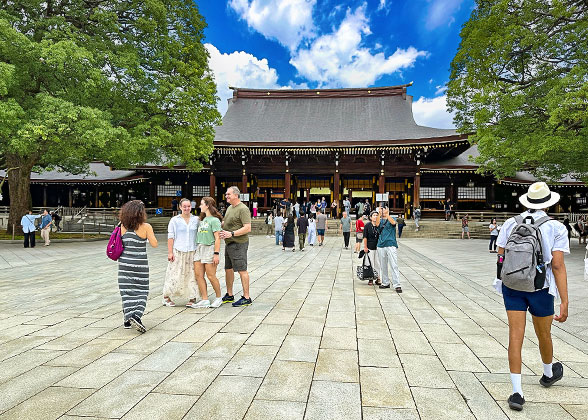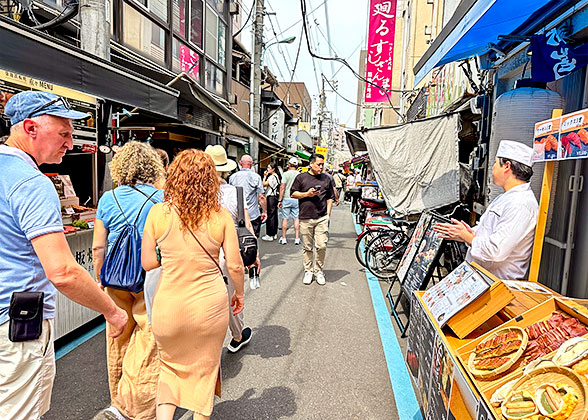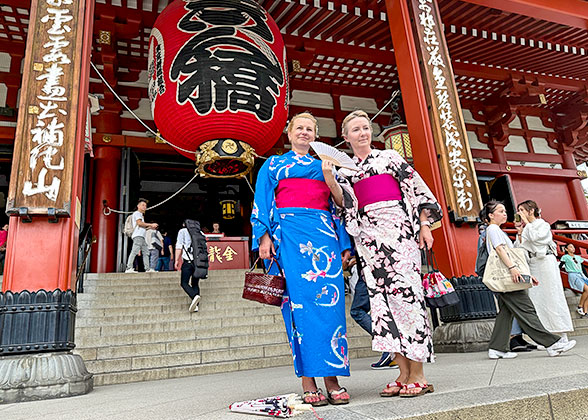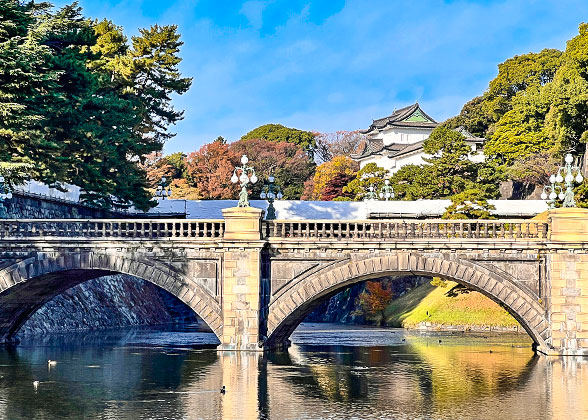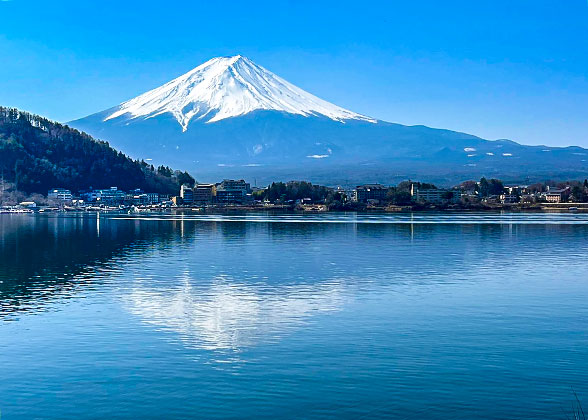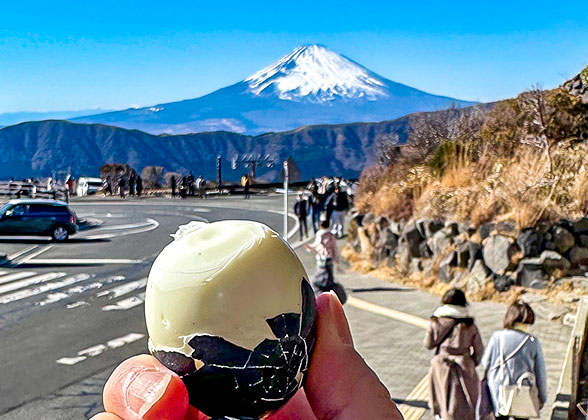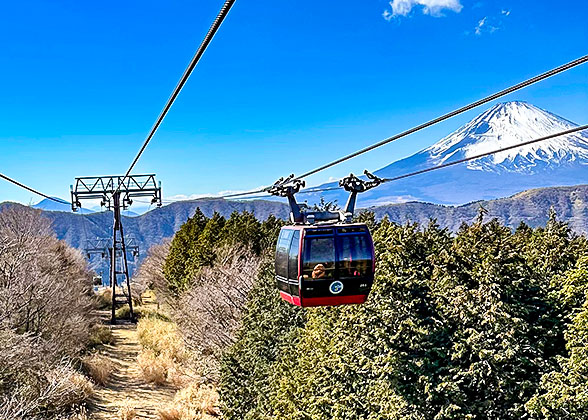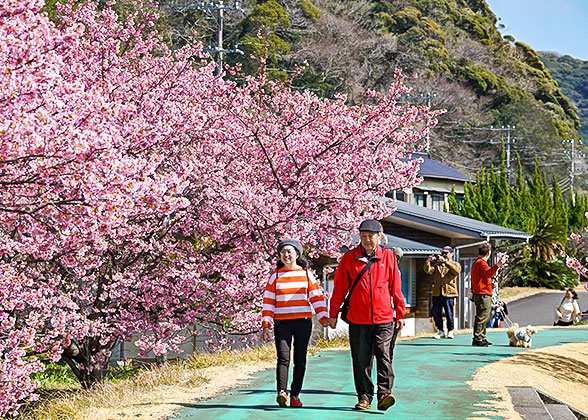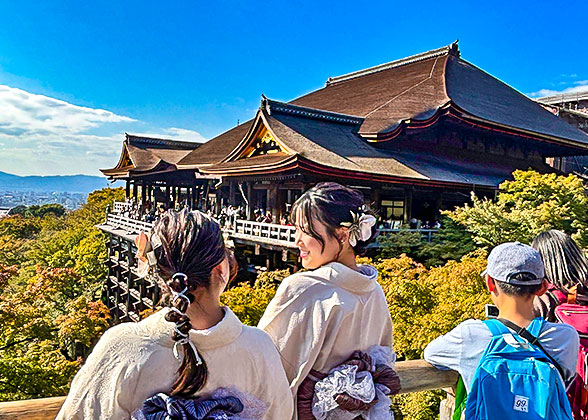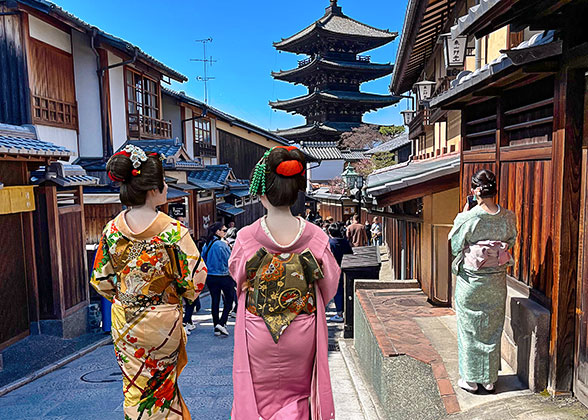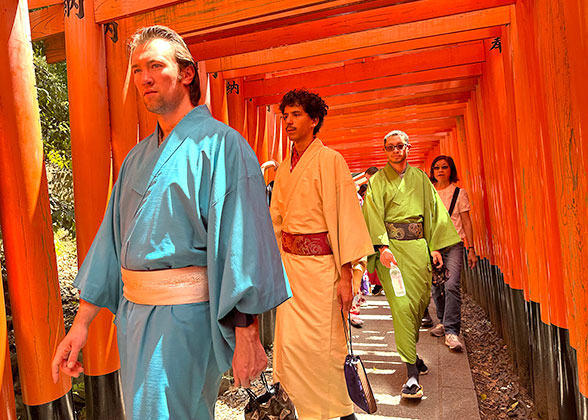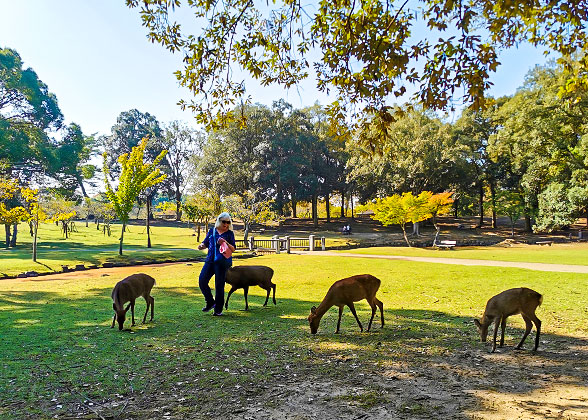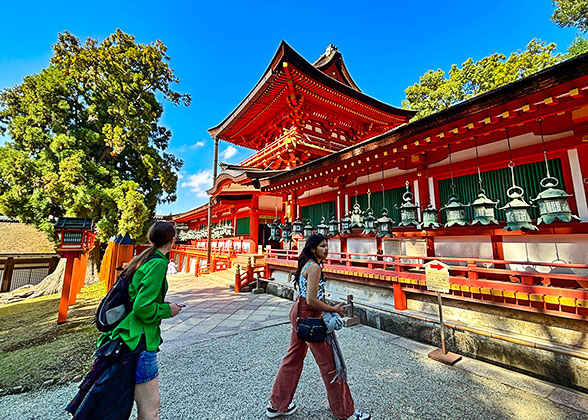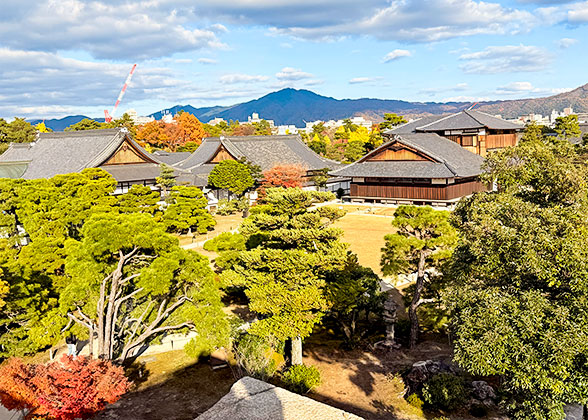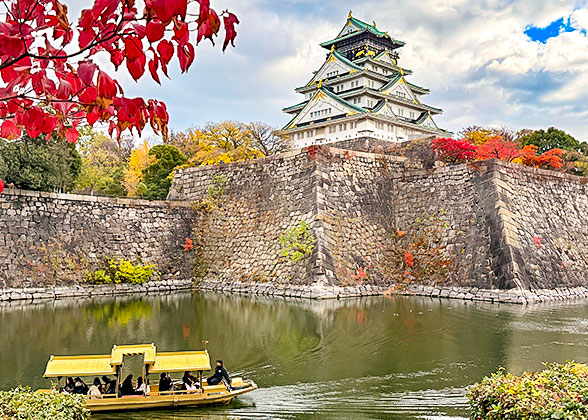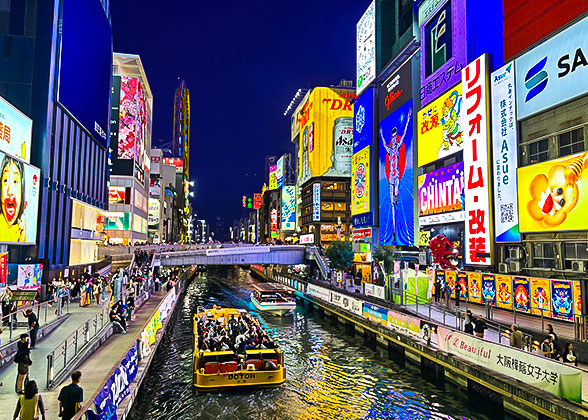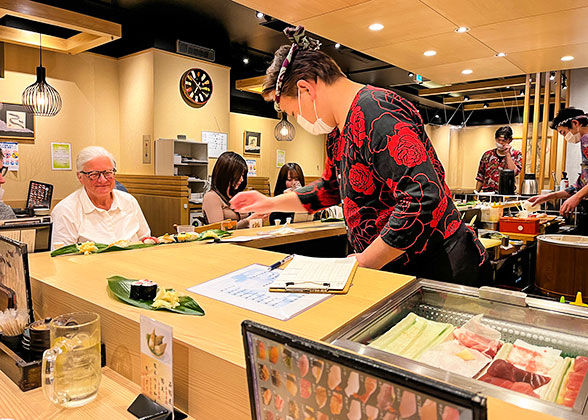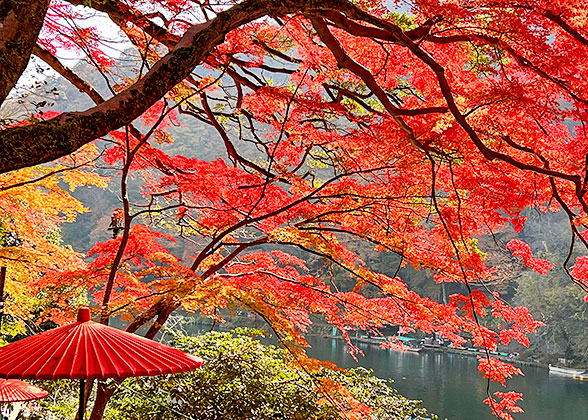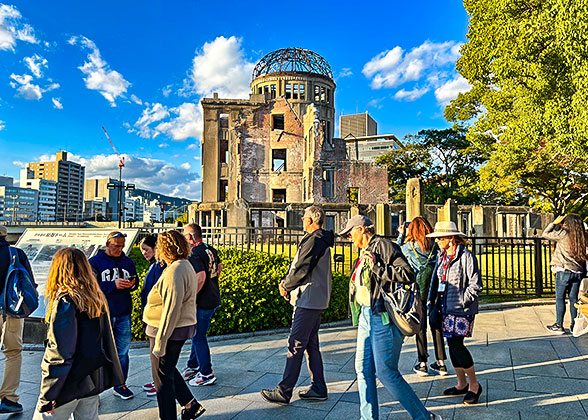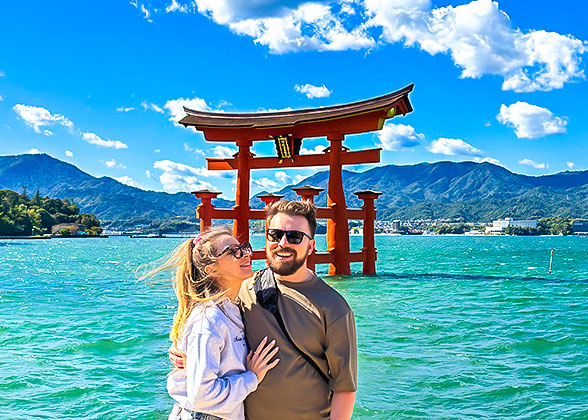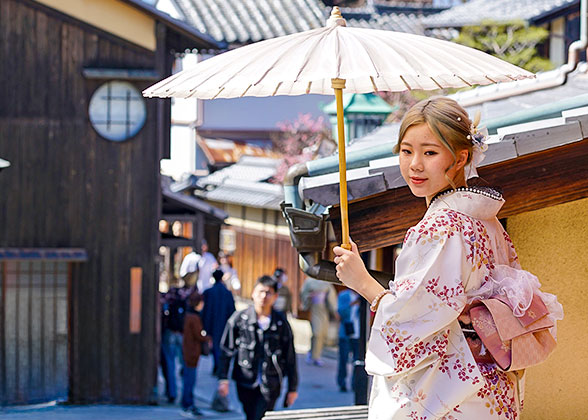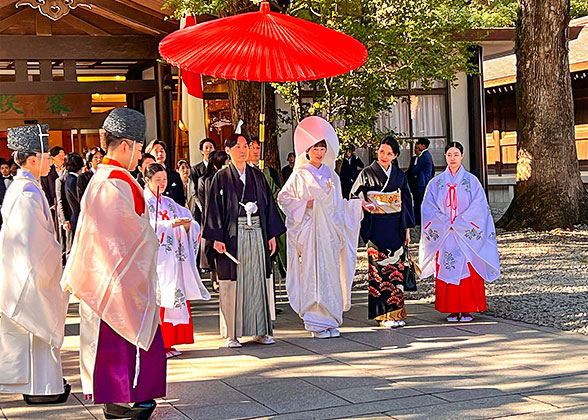Day 1: Tokyo Airport Pick-up by Shared Car
Welcome to Japan! After you land in Tokyo, our English-speaking assistant will guide you to a shared car that will transport you to your hotel. As shared cars only operate until 20:30, if your flight is too late to enjoy this service, we will refund your fee and suggest you take the metro or a taxi to the hotel independently. Since a taxi is quite expensive, costing USD 210-250 from Narita Airport and USD 90-110 from Haneda Airport, roughly 10 times the cost of metro, it is advisable to choose based on factors such as your luggage weight and number of travelers. Alternatively, you can book a private pickup with us.
► Suggested Activities for Early Arrivals
Our handpicked hotel is situated in central Tokyo, just one metro stop from Ginza, making it conveniently close to Tokyo’s top luxury places. Many believe Ginza is simply a paradise for luxury goods, but what truly defines it as the face of Tokyo is the practical and visually striking architecture designed by many of the world’s top architects. For example, MIKIMOTO in Ginza No. 2 features a hollowed-out shell design that tells the brand’s story of pearls, and Ginza Place is inspired by traditional openwork carving. Don’t forget to look up when you visit Ginza in your free time - every building you see reflects the fusion of business, art, and ambition.
|
Day 2: Tokyo: Tsukiji Outer Market, Meiji Jingu Shrine, Imperial Palace, Senso-ji Temple
Today, your guide will pick you up at the hotel and accompany you on an eco-friendly Tokyo tour using convenient public transportation. Our first stop is Tsukiji Outer Market, which showcases Tokyo’s traditional cuisine and street culture. As we walk through the narrow alleys of this food paradise, you’ll discover many time-honored restaurants for sushi, seafood bowls, and tamagoyaki omelette. It’s important to note that in Japan, eating while walking is considered unseemly because it can create a mess. Therefore, it’s best to finish your food at the designated areas in front of each shop. The next spot is the Meiji Jingu Shrine, dedicated to Emperor Meiji and his wife. Following the death of the highly respected Emperor Meiji in 1912, there was a strong demand to build a shrine in his honor. Why was it finally built in the Yoyogi area of central Tokyo? It turns out that Emperor Meiji once considered creating a natural garden here because of its quiet, natural surroundings. The name Yoyogi in Japanese also suggests locals’ aspiration for forests, which aligns with Emperor Meiji’s wishes. As a result, approximately 120,000 trees were transported from Japan and abroad, transforming a wasteland a hundred years ago into a lush city oasis today. Later, let’s move on to the Imperial Palace. When we arrive at the square in front of the palace, the first thing we see is a solemn statue of Kusunoki Masashige (1294 - 1336), a Japanese military commander, quietly watching the ancient palace as if guarding this sacred place. Inside this residence of the Japanese emperor and his family, you’ll notice the traditional Japanese architecture, characterized by spacious courtyards, beautiful ponds, and elegant bridges. Looking across the road, a scene of rows of office buildings creates a fascinating contrast between a classical Japanese palace and the modern city skyline. After a lunch break, we’ll head to the Senso-ji Temple in Asakusa area, one of the few remaining Shitamachi neighborhoods, aka “lower city” inhabited by commoners, thriving with businesses and authentic atmosphere of old Tokyo. At the entrance, take photos of the Kaminarimon Gate, which features a large red lantern and was initially built by a general about 1,000 years ago to pray for peace, prosperity, and a bountiful harvest. As we walk down the busy Nakamise-dori Street and see the Tokyo Skytree afar, the main hall of Senso-ji Temple is right in front of us. The smoke from an incense burner in the courtyard is believed to help relieve physical pain, so you might see many worshippers fanning the smoke toward their bodies to pray for healing from illnesses and disasters. Ultimately, your guide will escort you back to the hotel. Rest early tonight and look forward to viewing Mt. Fuji tomorrow. Meals: Breakfast
|
Day 3: Hakone Round Trip from Tokyo: Mt. Fuji, Owakudani Valley, Lake Ashi Cruise
Receiving your guide’s warm greeting in the hotel lobby in the morning, we’re embarking on an exciting trip to Hakone, where we’ll experience different modes of local transportation. After a bullet train ride to Odawara Station, let’s transfer to the Hakone Tozan Train. Known as Japan’s steepest mountain railway, it climbs up to 200 meters (655 feet). Running along a steep slope and looking out at the Hakone mountains through the large windows would make you feel like climbing the hill firsthand. Connect to a ride on the Tozan Cable Car to Sounzan Station, where we’ll transfer to the ropeway. When the scenery suddenly shifts from lush greenery to white smoke slowly billowing from cracked and exposed rocks, we reach the volcanic crater, Owakudani Valley. From the observation deck, you can get a close-up view of the volcanic plume landscape. Another must-try here is the black eggs, which are cooked in high-temperature, acidic hot springs. It is said that eating one can add 7 years to your life. Would you like a bite? During our next ride on the ropeway to Togendai Port, enjoy a bird’s-eye view of Lake Ashi and, on clear days, a majestic Mt. Fuji in the distance. Upon arrival, join your guide for a pirate ship cruise, offering a unique perspective of Mt. Fuji, Lake Ashi, and the surrounding mountains, along with the iconic red Hakone Shrine Peace Torii by the lakeside. Lake Ashi also has a mysterious side: legend says that the Nine-Headed Dragon God enshrined in Hakone Shrine was once an evil dragon in the ancient lake. A monk eventually subdued it and made it the guardian of the lake. As today’s Hakone tour comes to an end, your guide will escort you back to your hotel in Tokyo by train. ★ Why Our Mt. Fuji Tour Comes Before Others’: Flexible Date ExchangeMany visitors to Japan hope to see Mt. Fuji, but it is visible for only about 80 days a year, mainly from October to the next February. No matter when you visit, we offer an exclusive date-exchange service to better coordinate with Mt. Fuji’s visibility right up to the very last moment. The guide will check the weather forecast for your two-day stay in Tokyo and discuss whether you should adjust your itinerary to improve your chances of seeing Mt. Fuji by 50%. Although reserved tickets for express or bullet trains that need to be booked a month in advance might be converted to unreserved seats, we appreciate your understanding of our efforts to help you see Mt. Fuji. And don’t worry, there’s only about a 5% chance you won’t find a seat unless it’s peak season. Meals: Breakfast
|
Day 4: Train to Kyoto: Golden Pavilion, Pure Water Temple & Traditional Gion Area
Pure Water Temple This morning, you’ll begin with a nearly 2.5-hour train ride to Kyoto on your own, using the reserved tickets we’ve already booked for you. Please walk 3 minutes from the 3-star hotel to Kayabacho Station, take the Tozai Line to Otemachi Station, and then walk 3 minutes to Tokyo Station—just a 7-minute walk from the 4-star hotel—to catch the train. Upon arriving at Kyoto Station, your local guide will greet you. After checking into the hotel, let’s start the cultural tour at the Temple of the Golden Pavilion. When you’re captivated by its golden exterior and the reflection in the mirror pond, you might not realize what wild antics it has caused. In 1950, the Golden Pavilion, a national treasure that had stood for over 700 years, was set on fire due to a monk’s jealousy over its beauty. This unusual motive, rooted in human nature and philosophy, inspired writer Yukio Mishima to create his most famous novel, ‘The Temple of the Golden Pavilion,’ which further boosted the temple’s fame. Later, we will walk along the narrow stone slopes of Sannenzaka and Ninenzaka to the Pure Water Temple. Surrounded by time-honored townhouses, you’ll experience the charming atmosphere of traditional Kyoto style. If you’re interested, many shops here rent kimonos and offer Japanese makeup and hair styling services. As the oldest temple in Kyoto, the Pure Water Temple was initially founded by a practicing monk. Legend has it that a dream led him to find Otowa Falls, where he encountered the Bodhisattva of Compassion and received a sacred wooden statue. He built a thatched hut to enshrine it, which became the ancestor of the current Pure Water Temple. Standing on the well-known Pure Water Stage, supported by 18 massive wooden columns over 400 years old, feast your eyes on the panoramic view of Kyoto. Then, follow your guide to continue exploring the surrounding Gion area, Kyoto’s famous geisha neighborhood, where the Oscar-winning movie “Memoirs of a Geisha” was filmed. Finally, your guide will escort you back to your hotel, or you can follow our travel expert’s recommendations to enjoy Gion’s nightlife on your own. ► For Your Reference: Secret Route to Meet Genuine Geishas Just search for “Crown Restaurant” on Google Maps, and within a hundred meters of the location, you’ll discover authentic Japan. Around 9:00 PM, you can see geishas walking with the smooth grace of water birds gliding across a still pond, dressed in intricate kimonos and high-heeled okobo sandals as they head to various teahouses. Official descriptions in Japan often portray geisha as performers who showcase kimonos and traditional culture, but in reality, they are more like service professionals, engaging in intimate activities such as chatting with guests and serving wine. However, as a tourist, don’t expect any romantic affairs, since the Japanese government prohibits geisha from offering special services to foreigners. After your exploration, hire a taxi for a 15-minute ride back to your hotel, or walk a short distance to catch the 207 City Bus from Shijo Keihan-mae Station to Subway Kujo Station near your hotel, which takes about half an hour. Meals: Breakfast
|
Day 5: Kyoto Fushimi Inari Shrine, Nara Tour with World Heritage Sites & Deer, Return to Kyoto
After breakfast, your guide will first accompany you to the Fushimi Inari Shrine in Kyoto. There are over 30,000 shrines dedicated to the Inari god of harvest and wealth, found in offices, on building rooftops, or in private homes throughout Japan. Fushimi Inari Shrine acts as their headquarters, where even ancient emperors often worshipped. Feast your eyes on the enchanting Senbon Torii, a sacred pathway shaded by tens of thousands of vermilion torii gates that stretch from the main hall to the mountaintop. Don’t forget to take some photos here, just like in the movie “Memoirs of a Geisha”! Afterward, our trip will continue with a short train ride to Nara. Once we arrive at Nara Park, the most exciting activity for everyone is getting up close and personal with the deer. You might wonder why there are so many deer in Nara. It turns out that when Japan’s capital was moved to Nara in 710 AD, the war god Takenatsumi rode a white deer to what is now Kasuga Taisha Shrine. Since then, the deer have been living here as divine messengers for over 1,300 years. Nara people believe that spotting deer with white hair on their hind feet will bring good luck; let’s keep an eye out for the rare, lucky deer in the park! Next, follow your guide to the Great Eastern Temple to see how Buddhism thrived in Nara. After Buddhism was introduced to Japan from China in the 8th century, its influence grew significantly then, and Nara became one of Japan’s leading centers for building Buddhist temples. Records show that over 2.5 million people participated in constructing the Great Eastern Temple in various roles, including gathering and transporting wood and metal, as well as providing food for the 350,000 workers involved in crafting the Buddha statues. This is how the Great Buddha of Nara, one of the world’s largest bronze Buddha statues, was built - a project that nearly bankrupted the Japanese government at the time. Then, walk along the approach to the Kasuga Taisha Shrine, flanked by stone lanterns, where you’ll encounter roaming deer. Pass by a torii gate and a stone monument inscribed with the words “Cultural Property of Ancient Nara,” and Kasuga Taisha Shrine, which has blessed Nara for over a thousand years, stands amidst the lush greenery of Mt. Kasuga Primeval Forest. Thanks to the tradition of rebuilding every 20 years, when the cypress roof is replaced with fresh lacquer, the red and white main hall keeps its timeless, majestic appearance. In the late afternoon, let's go through the off-the-beaten-path historic streets of Naramachi neighborhood, where you can enjoy peace and relaxation while visiting the small yet charming Goryo Shrine. Meandering through the houses with plaster or clay walls that hug the path on both sides feels like traveling back to the 17th century. Entering the Naramachi Lattice House, you’ll get a quick glimpse of the traditional lifestyle of old Nara residents. The courtyard’s atrium offers a space to experience nature, and the wooden grille windows create a balance between sunlight, privacy, and ventilation. The stairs to the second floor serve as both staircases and storage, showcasing the ingenuity of traditional townhouses. By the end of the day, your guide will join you for a return train ride to Kyoto. Since we’re staying in the same hotel in Osaka for the next two nights, if you have heavy luggage hard to carry, consider asking the hotel staff to help you send it to Osaka today. Meals: Breakfast
|
Day 6: Kyoto Nijo Castle, Transfer to Osaka: Visit Osaka Castle, Dotonbori & Shinsaibashi
After meeting your guide at the hotel, the finale of our Kyoto tour unfolds as we visit the Nijo Castle, once the residence of the Tokugawa shoguns in Kyoto. After Japan was unified in 1603, the Tokugawa shogunate maintained peace and prosperity for over 260 years. The thick stone walls, grand gates, and magnificent main halls still stand as powerful symbols of its authority. In1867 AD, Nijo Castle quietly witnessed the last Tokugawa shogun hand over powerto the emperor, marking the end of the shogunate era. Later, the guide will accompany you to take the train to Osaka. After hotel check-in, let’s head to the Osaka Castle. The original castle, which took about 15 years to build, was 4-5 times larger than its current size. However, since the castle was built during one of the most turbulent times in Japanese history, it has been destroyed multiple times over the past 300 years. Therefore, when the main tower was rebuilt in 1931, a golden fish sculpture was specially crafted for its rooftop. It is said that this Japanese monster not only wards off evil spirits but also prevents fires. You can admire the mascot while looking down at the entire city from the top floor of the main tower. Osaka Castle Dotonbori River, Osaka
Finally, we’ll explore the Shinsaibashi and Dotonbori areas, Osaka’s version of Times Square, where neon-lit buildings fill the skyline and restaurants along the Dotonbori River display large, eye-catching billboards, creating a vibrant retro-futuristic vibe. Your guide will also briefly show you around a quiet Hozen-ji Temple hidden in the busy area, then either escort you back to the hotel or leave the rest of your time here free. To enjoy Osaka’s colorful nightlife on your own, why not stop for a taste at stalls selling takoyaki (octopus balls), freshly cooked ramen, and okonomiyaki pancakes, then relax while enjoying the lights reflected on the water? Afterwards, you can head to Shinsaibashi Street, Osaka’s busiest shopping district, to experience Japan’s lively retail scene. If you love shopping, feel free to spend hours there since your hotel is just a 10-minute walk away. Meals: Breakfast
|
Day 7: Hiroshima Round Trip from Osaka: Visit Itsukushima Shrine & Atomic Bomb Sites
Atomic Bomb Dome, Hiroshima This morning, please take the bullet train by yourself from Shin-Osaka Station to Hiroshima Station using the tickets provided by your guide the day before. Walk for 3 minutes from the hotel to Shinsaibashi Metro Station, and then take a 12-minute ride on the Midosuji Line to Shin-Osaka Station; it’s best to leave the hotel one hour before the departure time listed on your ticket. Arrive in about 1.5 hours, and the Hiroshima guide will meet you at the train station. We’ll start with a boat trip to the picturesque Miyajima Island, one of Japan’s Three Scenic Views. Since ancient times, the island has been revered as a place where gods are believed to dwell, and its shape resembles the sleeping posture of the Bodhisattva of Compassion. Accenting the island’s verdant old-growth forests are numerous shrines, Buddhist pavilions, and historic streets, giving it a sacred and mysterious atmosphere. Built where the tides rise and fall, the Itsukushima Shrine is a UNESCO World Heritage Site, where you can see its vermilion architecture reflected in the blue sea and the lush greenery of Mount Misen, highlighting the beauty of the golden age of classical Japanese culture. At high tide, the Grand Torii Gate appears to float on the water, while at low tide, you can walk up close to admire its details. In the afternoon, return to downtown Hiroshima to reflect on its tragic history with the atomic bombing. As the first city in the world to be hit by an atomic bomb in 1945, tens of thousands of people in Hiroshima were indiscriminately killed in the explosion. Our first stop, the Atomic Bomb Dome, was instantly engulfed in flames, burning from the ceiling to the ground, yet the main structure miraculously remained intact. Today, it stands as a World Heritage Site that silently delivers a message of anti-nuclear sentiment and promotes global peace. Then, visit the Hiroshima Peace Memorial Museum to see historical documents, photographs, and relics of victims from before and after the nuclear blast. However, the entire exhibition makes no mention that the Japanese militarism was the root cause of the disaster for the people of other Asian countries and the ordinary Japanese people. Many of the materials are disturbing, but they help us gain a deeper understanding of the true meaning of peace, and we sincerely hope for “No More Hiroshimas.” Finally, the guide will escort you to Hiroshima Station and give you the return tickets, which are included in the itinerary, to Osaka. From there, you’ll catch the train back and manage your own way to the hotel. Meals: Breakfast
|
Day 8: Departure from Osaka
This marks the end of your Japan guided group tour, and we bid you farewell this morning. For your own transfer to Osaka Airport, the most cost-effective options are the airport shuttle bus or the JR train, with taxi fares ranging from USD 110-140. We’re also happy to assist if you need help booking train or air tickets back to Tokyo.
► Where to Leave Your Last Memory of Osaka
It’s recommended to take a 10-minute taxi ride by yourself to Kuromon Market. Although it’s become a touristy spot where prices are higher than outside, when you see shops selling fresh fish, pufferfish, miso pickles, and Japanese sweets lining the street - accompanied by enticing aromas and a lively atmosphere at every turn - you can still capture a hint of the erstwhile Osaka Kitchen style. Afterwards, it’s about a 10-minute walk to Nankai Namba Station to catch the express train, which takes 35 minutes to reach Osaka Kansai International Airport.
Meals: Breakfast
|

